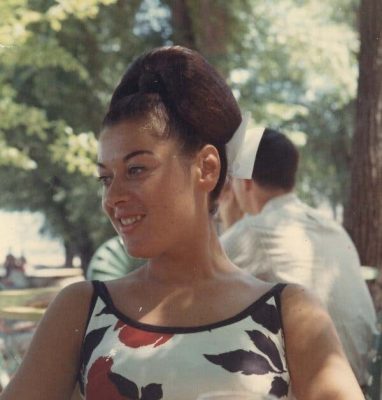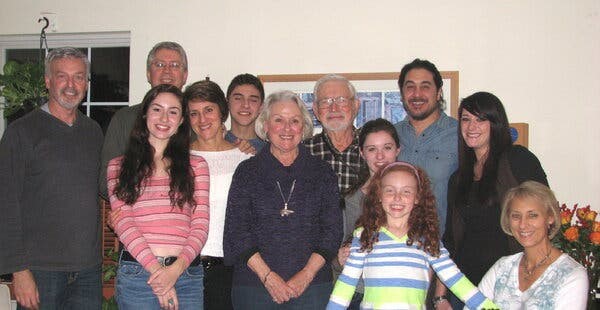Her efforts to reduce the stigma of divorce included coining the term “binuclear” to refer to families in two separate households.

The therapist Constance Ahrons in an undated photo. Her book “The Good Divorce” helped popularize the concept of collaborative divorce, in which both sides agree to disagree. Credit…Susan O’Haver Young

Published Dec. 5, 2021 Updated Dec. 6, 2021
Constance Ahrons, a prominent psychotherapist and mediator who challenged negative stereotypes about divorce and sought to show couples how they could achieve what she called a “good divorce” — a concept that also provided the title of her most popular book — died on Nov. 29 at her home in San Diego. She was 84.
Dr. Ahrons was diagnosed two months ago with an aggressive form of lymphoma and given a short time to live, her daughters, Geri Kolesar and Amy Weiseman, said. They said that Dr. Ahrons, an active member of the Hemlock Society, ended her life through the process laid out by California’s End of Life Option Act, with a doctor, nurse and family present. She believed strongly in choosing how one lives and how one dies, they added, and she wanted people to know of her choice.
When Dr. Ahrons (pronounced like “Aarons”) began her career in the late 1960s, divorce was still deeply stigmatizing. No-fault divorce, now recognized by all states, was not yet in vogue, which meant that either the husband or the wife had to be blamed for bad behavior, and this only exacerbated the rancor and shame.
Twice divorced herself, Dr. Ahrons was an early champion of collaborative divorce, in which both sides agree to disagree; they continue to collaborate in raising the children and avoid going to court. This was not a new concept, but Dr. Ahrons had done research to back it up and helped popularize it with her provocatively titled 1994 book, “The Good Divorce.”
Written not for academics but for the mass market, the book proved immensely popular, was translated into several languages and landed Dr. Ahrons on talk shows and the lecture circuit.
“The Good Divorce,” published in 1994, landed Dr. Ahrons frequent appearances on talk shows and the lecture circuit.
“The good divorce is not an oxymoron,” she wrote. “A good divorce is one in which both the adults and children emerge at least as emotionally well as they were before the divorce.”
A divorce could be made good, and could be better than an unhappy marriage, she posited, if couples handled it right — if they did not bad-mouth each other to the children, and if they cooperated in meeting the children’s emotional and physical needs. “In a good divorce,” she wrote, “a family with children remains a family,” even if the parents and children reconfigure themselves in different homes with new people in the picture.
Dr. Ahrons became a lightning rod for some conservative and religious organizations, which accused her of promoting divorce and contributing to the breakdown of the family.
But she insisted that she was not “pro” divorce. Rather, she said, she wanted couples to understand that there were ways to minimize the upheaval. And she wanted society to see that divorce was as much a social institution as marriage, a common experience rather than a deviant one, and that it could have beneficial outcomes.
“Connie was not trying to tell you what to do,” Stephanie Coontz, a professor of history and family studies at Evergreen State College in Olympia, Wash., said in a phone interview. “But once you decided what to do, she wanted to help you do it in the best possible way.”
Dr. Ahrons’s research, which included a longitudinal study that was begun in 1977 and stretched over 20 years, found that not all divorces were acrimonious; in about half the cases, the couples maintained amicable relationships.
She viewed language as an important tool in helping to destigmatize divorce. She coined the term “binuclear” to denote two separate households connected by familial bonds, and sought to replace pejoratives like “broken home.”
“The Good Divorce” was followed by “We’re Still Family” (2004), in which she studied how grown children viewed their parents’ divorce.
A member of numerous professional organizations, Dr. Ahrons was among the founders of the Council on Contemporary Families, a nonprofit group of family researchers that used peer-reviewed academic research to provide an alternative to ideologically oriented think tanks.
“A true scientist-practitioner,” Eli Karam, a professor in the couple and family therapy program at the University of Louisville, described her in an email.
Through her “groundbreaking research and clinical training model,” Dr. Karam said, “she pioneered both the art and science of working with divorcing families.”
Constance Ruth Ahrons was born on April 16, 1937, in Brooklyn and grew up in Somerville, N.J. Her father, Jacob Ahrons, born in Russia, and her mother, Estelle (Katz) Ahrons, born in Poland, owned and operated an appliance store in Somerville.

Then she read “The Feminine Mystique,” Betty Friedan’s landmark 1963 manifesto of the women’s movement.
“It slammed me in the face,” Dr. Ahrons was quoted as saying in “A Strange Stirring” (2011), a book about the influence of Ms. Friedan’s book by Ms. Coontz, the Evergreen professor.
Dr. Ahrons said “The Feminine Mystique” was a revelation to her about the societal forces oppressing women. “Now I could name the problem and know it didn’t originate in my own psyche,” she said. When she finished reading it, she threw away her tranquilizers and returned to Upsala, graduating in 1964 with a bachelor’s degree in psychology.
She went on to earn her master’s in social work from the University of Wisconsin, Madison, in 1967 and her doctorate in counseling psychology, also from Wisconsin, in 1973.
After graduating, she taught at the university’s School of Social Work for several years and co-founded the Wisconsin Family Studies Institute, where she worked as a therapist.
She started teaching sociology at the University of Southern California in 1984. She became director of the university’s Marriage and Family Therapy Training Program in 1996 and a professor emerita in 2001.
Her marriages, to Jac Weiseman, a lawyer, in 1956, and Morton Perlmutter, a therapist, in 1969, both ended in divorce. She often said that the first divorce was contentious; Ms. Kolesar said that the experience helped persuade her mother to dedicate herself to “changing the trajectory” of other people’s divorces.
In addition to Ms. Kolesar and Ms. Weiseman, Dr. Ahrons is survived by four grandchildren; a brother, Richard Ahrons; and her longtime partner, Roy H. Rodgers, with whom she wrote her first book, “Divorced Families: A Multidisciplinary Developmental View” (1987).


